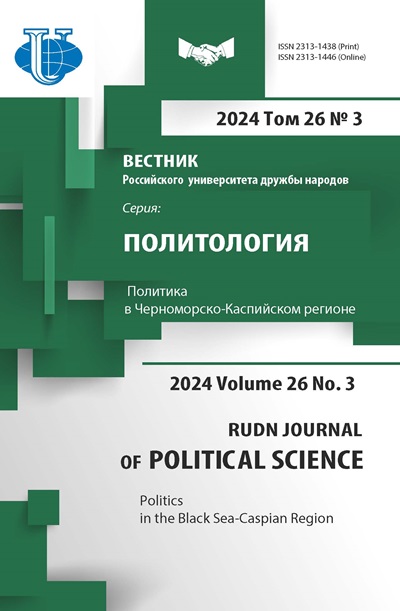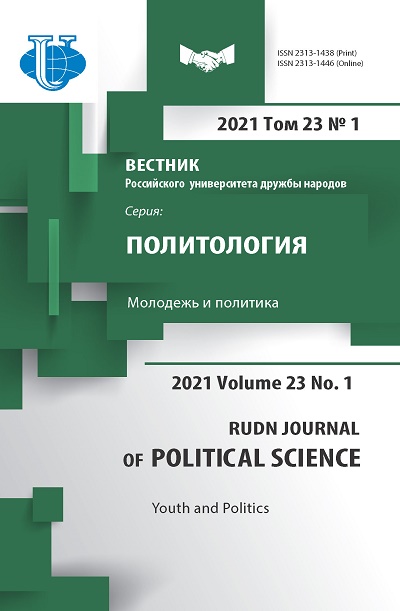Value Orientations of Russian Youth in Interaction Models between the State and Civil Society
- Authors: Lagutin O.V.1
-
Affiliations:
- Saint Petersburg State University
- Issue: Vol 23, No 1 (2021): Youth and Politics
- Pages: 107-117
- Section: VALUE ORIENTATIONS AND PATRIOTIC EDUCATION OF YOUNG PEOPLE
- URL: https://journals.rudn.ru/political-science/article/view/25714
- DOI: https://doi.org/10.22363/2313-1438-2021-23-1-107-117
Cite item
Full Text
Abstract
In the context of the formation of civil society in modern Russia with the traditionally significant role of the state, the problem of studying the inclusion of young people in a particular model of the relationship between these two institutions is of particular relevance. This choice will determine a certain type of political system in Russia in the future. The purpose of the study is to identify empirically groups of young people who are determined by the direction of value orientations in public life and their involvement in various models of interaction between the state and civil society. The empirical basis of the study was a project conducted in 2019 by Saint Petersburg State University and Altai State University to study the political consciousness of Russian youth. As a result of using multidimensional methods of analysis, the connection between the involvement of the “citizen-state” models and the types of value orientations of Russian youth is revealed. Four groups of young people were obtained, stratified by value orientations, the specifics of relations between the state and citizens of our country, and the choice of the preferred type of state to live in.
About the authors
Oleg Vladimirovich Lagutin
Saint Petersburg State University
Author for correspondence.
Email: o.lagutin@spbu.ru
PhD in Political Science, Associate Professor of the Department of Political Institutions and Applied Political Studies
Saint Petersburg, Russian FederationReferences
- Artemov, G. P. The nature of changes in political attitudes and value orientations of St. Petersburg voters. Political analysis. 2005; 6: 4–27. (In Russian).
- Komissarova, A. A. State and civil society: Features of relations (on the example of the Russian Federation). My professional career. 2020; 2(12): 67–74. (In Russian).
- Kosov, G. V., & Pasler, O. V. Models of interaction between state and civil society in global political system: monograph. Stavropol: Stavrolit; 2010. 200 p. (In Russian).
- Lagutin, O. V. The opinion of Petersburger on the current relationship «Citizen – State». Conflictology. Foundation for the Development of Conflictology. Saint-Peterburg: State University. 2016; 4: 153–169. (In Russian).
- Levashov, V. K., Shushpanova, I. S., Afanasyev, V. A., & Novozhenina, O. P. Russian civil society and state in processes of the Eurasian integration. The Science. Culture. Societies. 2019; 3–4: 66–77. (In Russian).
- Olompiev, K. S. Models of state policy in the sphere of interaction between the state and civil society institutions in modern Russia. ARS ADMINISTRANDI. 2015; 4: 57–67. (In Russian).
- Shkirchak, S. I. To the question on the models of interaction between government and civil society. Belgorod State University Scientific Bulletins. Series History. Political Science. Economy. Computer science. 2013; 22(165): 178–179. (In Russian).
- Sungurov, A. U. Interaction between the state and the civil society: possible models. Civil dialogue. 2008; 3: 32–43. (In Russian).
















